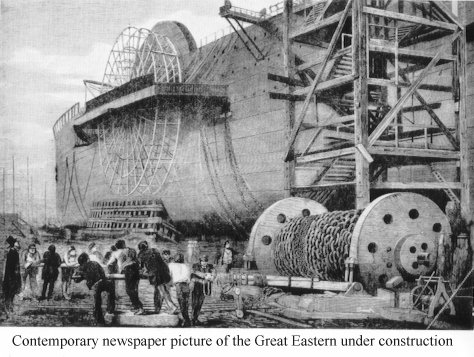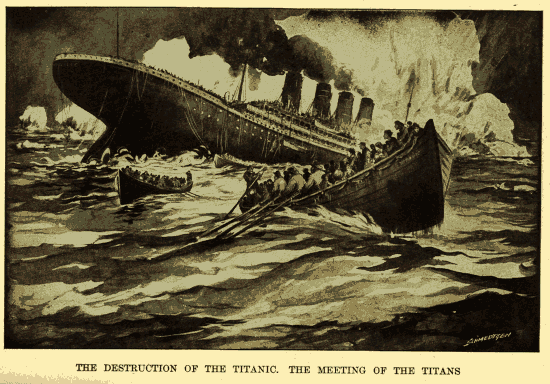Titanic and Great Eastern
Today, a story of two ships. One sank. One didn't. The University of Houston's College of Engineering presents this series about the machines that make our civilization run, and the people whose ingenuity created them.
Both the Titanic and the Great Eastern were once the largest ships ever made. They're two of the best known as well. The Great Eastern, launched in 1858, was almost seven hundred feet long. The Titanic, launched fifty-three years later, was nearly nine hundred feet long. And each suffered the same kind of accident soon after it was put to sea.
Isambard Kingdom Brunel, who designed the Great Eastern, was the greatest artist ever to work in iron. He was remarkably thorough, and the Great Eastern reflected that care. It was to be a passenger liner, and no cost was spared in making it safe. It had a double hull. It was honeycombed with bulkheads that created almost fifty water-tight compartments.
The Great Eastern was overdesigned and inefficient, but it still provided transatlantic service for two years. Then, in 1862, an uncharted rock in Long Island Sound tore an 83-foot-long, 9-foot-wide, gash in its outer hull. But the inner hull held. And it steamed safely on into New York Harbor.
The Titanic was another matter. Transatlantic service was now lucrative business. Bit by bit, safety standards yielded to commercial pressures. The Titanic's hull boasted a double bottom, but it had only a single wall on the sides. It had fifteen sections that could be sealed off at the throw of a switch, but the bulkheads between those sections were riddled with access doors to improve luxury service. It didn't have enough lifeboats. Why did everyone think it was so safe? Well, its luxurious beauty was seductive. Historian Walter Lord said of the Titanic, "The appearance of safety was mistaken for safety itself."
When the Titanic grazed a North Atlantic iceberg in 1912, it suffered nothing like the continuous gash in the side of the Great Eastern. Instead, rivets popped and its plates parted from the hull over a 250-foot length. Without a double sidewall, that let in enough water to sink it within a scant two hours and forty minutes.
The Great Eastern's engines never did function efficiently enough to carry passengers profitably. But it was the only ship large enough to finally lay the Atlantic Cable. Still, it had little other purpose. One investor tried to make it into a floating amusement park. When it was dismantled for scrap, the job took two years. And a long-dead body turned up inside that double hull.
So the shadow of Brunel's Great Eastern hovers over the Titanic. By 1912, a half-century of safe steamships had put everyone off their guard. We can draw a parallel in the loss of the space shuttle Challenger. NASA's safety record had been unreasonably good up to then. We forgot how dangerous rocket launches really are. The Titanic and Challenger remind us that we engineers had better mix a dollop of fear in with our excitement -- especially when everything's going well.
I'm John Lienhard, at the University of Houston, where we're interested in the way inventive minds work.
(Theme music)
Lord, W., A Night to Remember. various publishers from 1955 to 1987. The latest is New York: Amereon House.
Bonsall, T.E., Great Shipwrecks of the 20th Century. New York: Gallery Books, 1988, Chapter 2.
For more on the sinking of the Titanic see Episodes 747 and 941.
This is a greatly reworked version of Episode 81.

